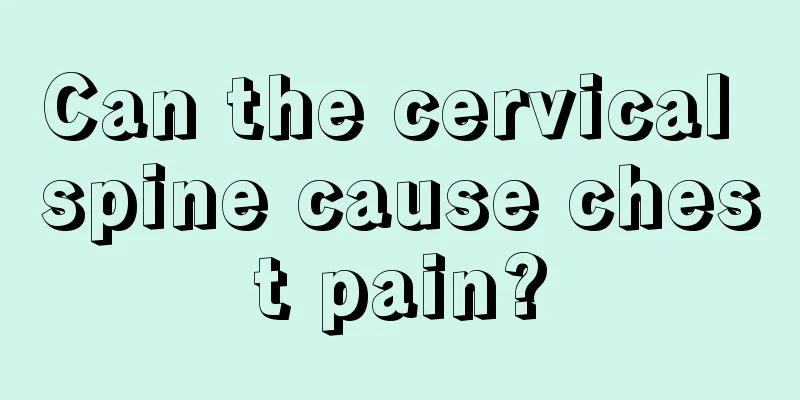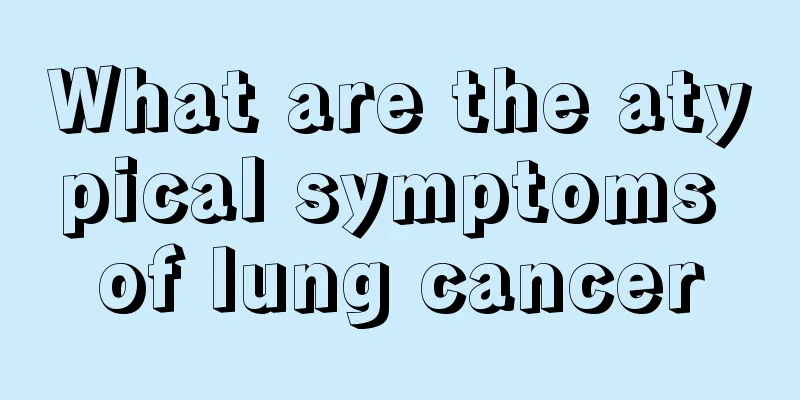Can the cervical spine cause chest pain?

|
If cervical spondylosis occurs in a person, it will not only cause cervical pain, because the cervical spine is related to many parts of the body. Common cervical spondylosis patients will experience symptoms of shoulder, neck, dizziness and blurred vision, but some cervical spondylosis patients find that they also feel a dull pain in the chest when cervical spondylosis occurs. Can cervical spondylosis, a joint disease, cause chest pain in the human body? Cervical spondylosis can cause local pain in the shoulders and neck, but generally does not cause chest pain. If chest pain occurs, other causes need to be checked. Now, cervical spondylosis can be treated through traction, massage and acupuncture. In addition, the chest can be checked to see if there is breast hyperplasia or other lesions, and then symptomatic medication can be used for treatment. Complications of cervical spondylosis: Swallowing disorders: A small number of people experience symptoms such as nausea, vomiting, hoarseness, dry cough, and chest tightness. Visual impairment: manifested as decreased vision, eye pain, photophobia, tearing, unequal pupil sizes, and even narrowing of the visual field and sharp decrease in vision. Some patients may even go blind. Cervical syndrome: manifested by precordial pain, chest tightness, arrhythmia (such as cardiac arrest, etc.) and ST segment changes on the electrocardiogram, which can be easily misdiagnosed as coronary heart disease. This is caused by the stimulation and compression of the cervical nerve roots by cervical bone spurs. Hypertension cervical spondylosis: It can cause blood pressure to rise or fall, among which the increase in blood pressure is more common, which is called "cervical hypertension. Chest pain: manifested as slow-onset, persistent unilateral pectoralis major and breast pain, with pectoralis major tenderness during examination. Paralysis of the lower limbs: Early symptoms include numbness, pain, and lameness of the lower limbs. Some patients feel like they are walking on cotton when walking. Some patients may also have bowel and urination disorders, such as frequent urination, urgency, difficulty urinating, or incontinence. Cataplexy: It often causes sudden collapse when the body loses support due to sudden turning of the head while standing or walking. The patient will wake up quickly after falling to the ground, without any impaired consciousness or sequelae. Such patients may experience symptoms of autonomic dysfunction such as dizziness, nausea, vomiting, and sweating. |
<<: What to do if the anus becomes red and painful
>>: What medicine is good for nervous pain
Recommend
Can cervical cancer be cured
Can cervical cancer be cured? Cervical cancer is ...
What are the hazards of welding smoke
Welding fume generally produces a large amount of...
What's wrong with purple spots on legs
Many people find purple spots on their legs, so t...
What to do if acne appears on both sides of the jaw
The sides of people's jaws belong to the lymp...
Why do snakes have legs?
It is said to be a cold-blooded animal that we of...
Is it normal to peel off the skin after using medicine to remove spots
Although laser freckle removal surgery is the mos...
Abdominal colic syndrome, mainly has these manifestations
Abdominal colic is generally pain in the upper ab...
Nursing of adverse reactions to chemotherapy in patients with ovarian cancer
Chemotherapy is one of the main treatments for ov...
The dangers of bathing in an inflatable bathtub
Although the inflatable bathtub is very space-sav...
Rhinitis spray
Rhinitis is a common disease, most of which are c...
A brief discussion on the hazards of glioma
Glioma can be divided into two types, one that oc...
Cerebellar infarction? Find the right treatment and recover quickly
Cerebellar infarction is a common and frequent di...
What is the success rate of minimally invasive surgery for erosive gastritis?
After being diagnosed with erosive gastritis, pat...
Steps to remove scale from a water boiler
The scale problem can be hidden in many places. A...
What are the nine clinical symptoms of bone cancer?
In recent years, the number of bone cancer patien...









